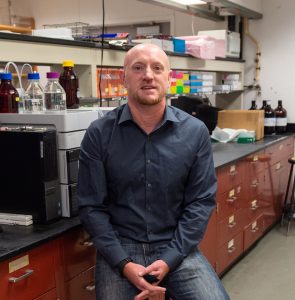Are you interested in knowing how living cells function? Do you wonder how scientists grow human tissues in the lab? Have you pondered how robots are programmed to work? If science piques your interest, delve into the topic at the BioInspired Institute research symposium Oct. 19 and 20 at the Life Sciences Complex.
During two days of talks, poster sessions and presentations, the symposium will showcase the work of undergraduate and graduate students, doctoral associates and faculty affiliated with the University-based research institute. The event is free and open to the public. Registration and a detailed event schedule are available online.
We sat down with James H. (Jay) Henderson, BioInspired Institute director and professor of biomedical and chemical engineering in the College of Engineering and Computer Science, to learn more about the projects and activities that will be featured at the symposium.



 Robert Doyle
Robert Doyle